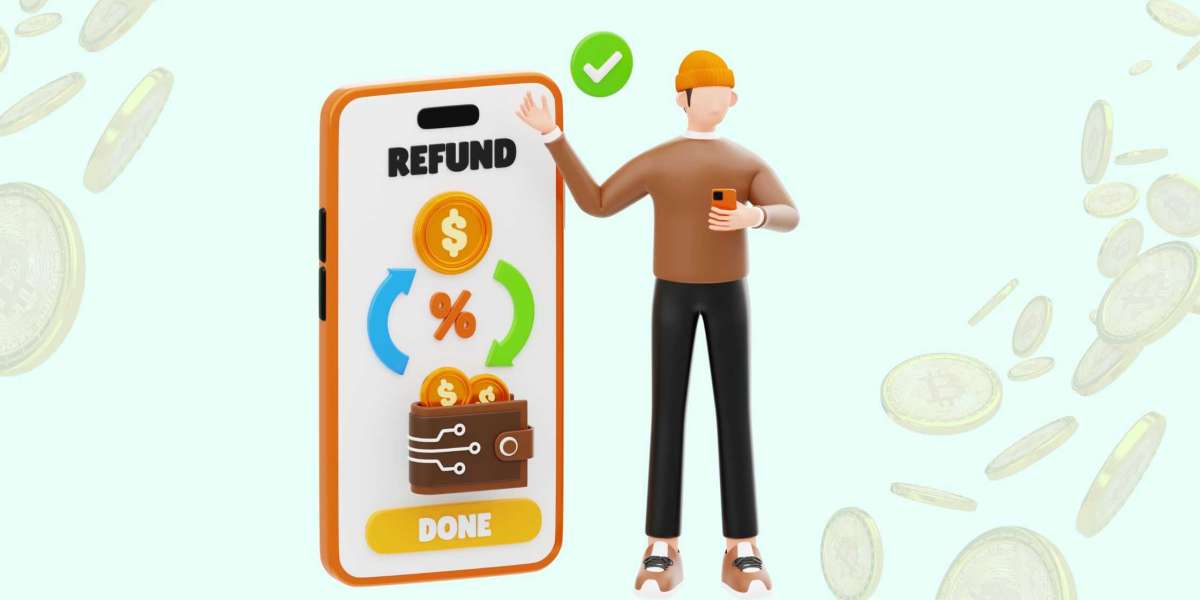As the world of cryptocurrency continues to evolve, the need for secure and efficient methods to store digital assets has never been more important. Crypto wallets are essential tools in this space, providing both storage and access to cryptocurrencies. But what exactly is a crypto wallet, how does it work, and how do you choose the right one for your needs? This article breaks down everything you need to know about crypto wallets, their importance, the different types available, and how to create one that fits your requirements.
What are Crypto Wallets?
A crypto wallet is a digital tool that allows you to store, manage, and interact with your cryptocurrencies. In simple terms, it’s like a physical wallet, but instead of holding cash or cards, it holds private keys for your digital assets. The private key is a critical element in the world of cryptocurrency because it acts as a password, allowing you to access and manage your assets on the blockchain.
There are two main components to every crypto wallet:
- Public Key: This is your wallet address, which others can use to send you cryptocurrencies.
- Private Key: This is your secret code. If someone gets access to your private key, they can control your cryptocurrency, which is why safeguarding it is essential.
Crypto wallets don’t store the cryptocurrency itself. Instead, they store the keys that allow you to access and control your digital assets on the blockchain.
How Does a Crypto Wallet Work?
To understand how a crypto wallet works, it’s important to first know a bit about the blockchain. A blockchain is a decentralized ledger that records all transactions across a network. When you send or receive cryptocurrency, a transaction is recorded on this ledger, and your wallet’s private key is what enables you to sign and authorize these transactions.
The process of crypto wallet development focuses on creating the infrastructure and security measures needed to interact with this blockchain, ensuring that users can safely store, send, and receive digital assets.
Here’s a simplified flow of how crypto wallets work:
- Sending Cryptocurrency: When you send cryptocurrency to someone, you enter their wallet address in your wallet app and authorize the transaction using your private key.
- Transaction Confirmation: The transaction is broadcast to the blockchain network, where miners or validators confirm the transaction. Once confirmed, it is added to the blockchain, and the recipient can access the cryptocurrency.
- Receiving Cryptocurrency: To receive cryptocurrency, you simply provide your wallet’s public address. The sender uses this to send funds, and the transaction is recorded on the blockchain. Your wallet’s private key ensures that only you can access and use the funds.
Why Are Crypto Wallets Important?
Crypto wallets are vital because they give you control over your digital assets. Without a wallet, you wouldn’t be able to send, receive, or store cryptocurrencies. More importantly, crypto wallets allow you to hold your assets securely without relying on third parties, like exchanges or banks, which might be vulnerable to hacks or other risks.
Here’s why crypto wallets are so important:
- Security: Crypto wallets provide security through encryption and private keys. With the right precautions, you can ensure that your digital assets are protected from theft.
- Access and Control: A wallet gives you full control over your cryptocurrencies, unlike centralized exchanges, where you don't hold your private keys.
- Flexibility: Crypto wallets enable you to manage multiple types of cryptocurrencies in one place. Whether you hold Bitcoin, Ethereum, or other altcoins, many wallets support various assets.
- Privacy: By using a crypto wallet, your transactions remain private and decentralized. The blockchain offers transparency, but your identity is kept anonymous, offering more privacy compared to traditional financial systems.
Types of Crypto Wallets: Which One is the Best?
Crypto wallets come in different forms, each with unique features, pros, and cons. Choosing the right wallet depends on your needs, such as security, ease of use, and the type of cryptocurrency you want to store.
1. Hot Wallets
Hot wallets are connected to the internet and are convenient for frequent transactions. These wallets are software-based, and because they are always online, they make it easy to send and receive funds quickly. Examples include mobile app developers, desktop wallets, and web-based wallets.
Pros:
- Fast and convenient access to your funds.
- Ideal for frequent trading or transactions.
- Typically free to use.
Cons:
- Vulnerable to hacking since they are connected to the internet.
- Less secure than cold wallets for long-term storage.
Best for: Active traders and people who need quick access to their crypto.
2. Cold Wallets
Cold wallets are offline wallets, and they store your private keys in a secure, offline environment. This means they are not connected to the internet, reducing the risk of hacks. Cold wallets are ideal for long-term storage of cryptocurrency.
Types of Cold Wallets:
- Hardware Wallets: Physical devices that store your private keys offline. Examples include Ledger and Trezor.
- Paper Wallets: A physical printout of your public and private keys, which you can store securely.
Pros:
- Highly secure because they are not connected to the internet.
- Ideal for long-term storage and protection against hacks.
Cons:
- Less convenient for quick transactions.
- Risk of physical damage or loss (especially with paper wallets).
Best for: Long-term investors who don’t need frequent access to their funds.
3. Web Wallets
Web wallets are accessed through a browser, meaning they are also hot wallets. You can use them to store your crypto in the cloud, making it accessible from any device with internet access.
Pros:
- Convenient and easy to use.
- Accessible from multiple devices.
Cons:
- Vulnerable to hacking if the provider’s security is compromised.
- Often less secure than other types of wallets.
Best for: Users who want quick access to their funds but don’t mind the added risk.
4. Mobile Wallets
Mobile wallets are apps installed on your smartphone. They combine the accessibility of hot wallets with the portability of a mobile device.
Pros:
- Easy to use and carry around.
- Most mobile wallets support QR code scanning for fast transactions.
Cons:
- Potentially vulnerable if your phone is compromised or lost.
- Risk of malware if the wallet app isn’t from a trusted source.
Best for: Users who want a balance between convenience and security while on the go.
5. Desktop Wallets
Desktop wallets are software programs that you download and install on your computer. They are hot wallets but typically offer better security than web wallets because they are stored locally on your device.
Pros:
- Provide better security than web wallets.
- Easier to back up and restore than mobile wallets.
Cons:
- Vulnerable to viruses, malware, or theft if your computer is compromised.
- Not as convenient as mobile wallets for everyday use.
Best for: Users who prefer storing crypto on their personal devices with more control over security.
How to Make a Crypto Wallet
Creating a crypto wallet is a straightforward process, but the exact steps vary depending on the type of wallet you choose. Here’s a general guide on how to create a wallet, starting with a software-based wallet:
Step-by-Step to Make a Crypto Wallet (for a Software Wallet)
- Choose Your Wallet Type: Decide if you want a hot wallet (e.g., mobile, desktop, or web wallet) or a cold wallet (e.g., hardware or paper wallet). If you want to use a hot wallet, download a wallet app such as MetaMask, Exodus, or Trust Wallet.
- Download the Wallet App: For mobile wallets, go to the App Store or Google Play Store and download the app. For desktop wallets, visit the official website of the wallet provider and download the software.
- Create a New Wallet: Once the app or software is installed, open it and choose the option to create a new wallet. You’ll be prompted to set up a strong password.
- Backup Your Recovery Phrase: Most wallets will provide you with a 12-24-word recovery phrase (seed phrase). This phrase is vital because it’s the only way to recover your wallet if you lose access to it. Write it down and store it securely offline.
- Create Your Public Address: After setting up your wallet, it will generate a public address, which you can share with others to receive cryptocurrency.
- Start Using Your Wallet: You can now send, receive, and store cryptocurrency using your wallet. Make sure to keep your private key secure and never share it with anyone.
Step-by-Step to Make a Cold Wallet (Hardware Wallet)
- Purchase a Hardware Wallet: Buy a hardware wallet from a reputable provider like Ledger or Trezor.
- Set Up the Wallet: Once you receive the device, follow the manufacturer’s instructions to set it up. This typically involves connecting the device to your computer and initializing it.
- Write Down the Recovery Phrase: During setup, you’ll be given a recovery phrase, which you must write down and store securely.
- Transfer Cryptocurrency: After setting up the wallet, you can transfer funds from other wallets or exchanges to your hardware wallet’s public address.
Conclusion
Choosing the right crypto wallet is a critical decision for anyone involved in the world of cryptocurrency. Whether you opt for a hot wallet or a cold wallet, it’s essential to understand the security features, ease of use, and the level of protection each type offers. By carefully selecting a wallet that suits your needs and taking the necessary steps to secure your private keys, you can confidently manage your digital assets. Always remember, the safety of your cryptocurrencies is in your hands, and choosing the right wallet is the first step toward protecting your investment.








